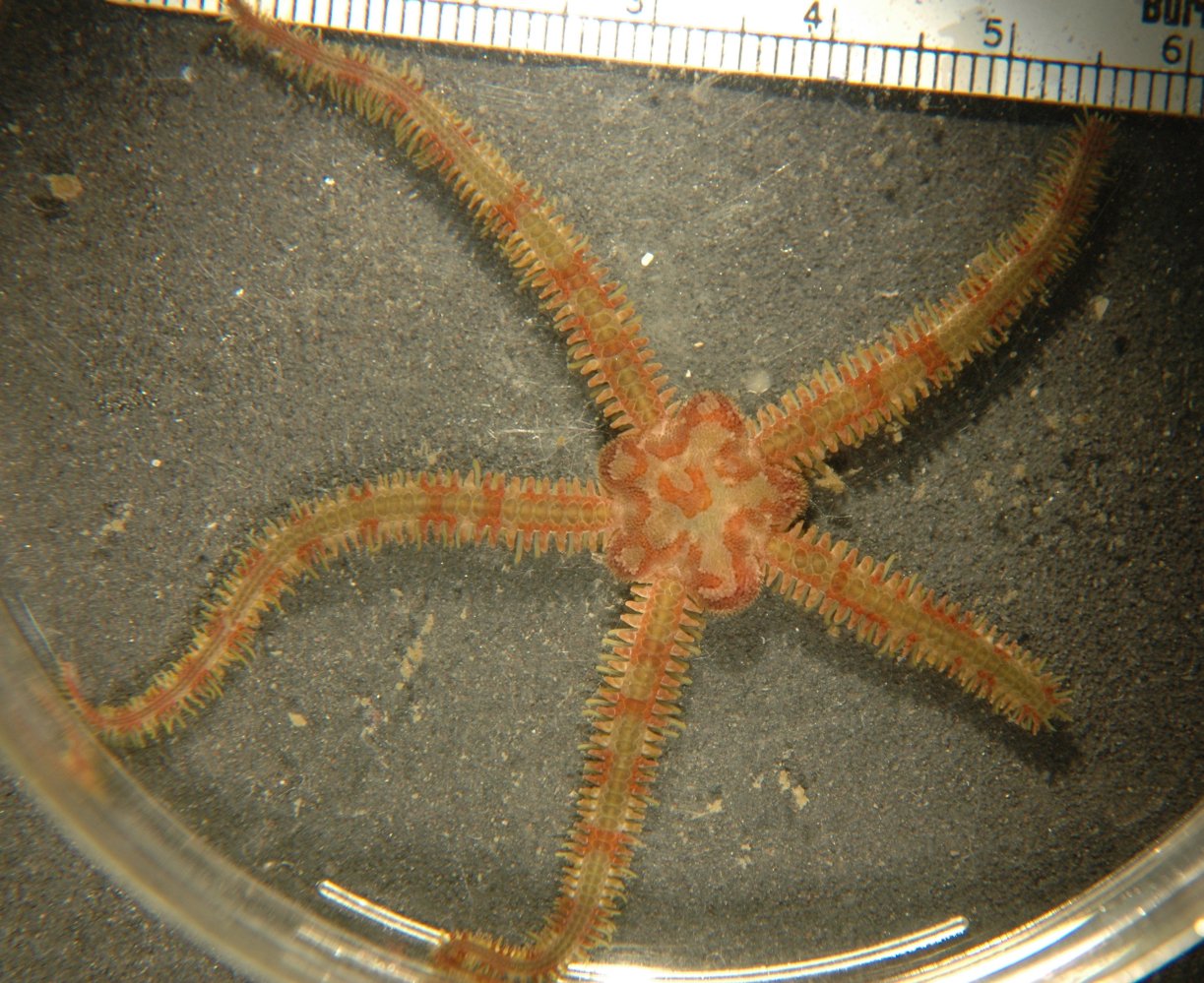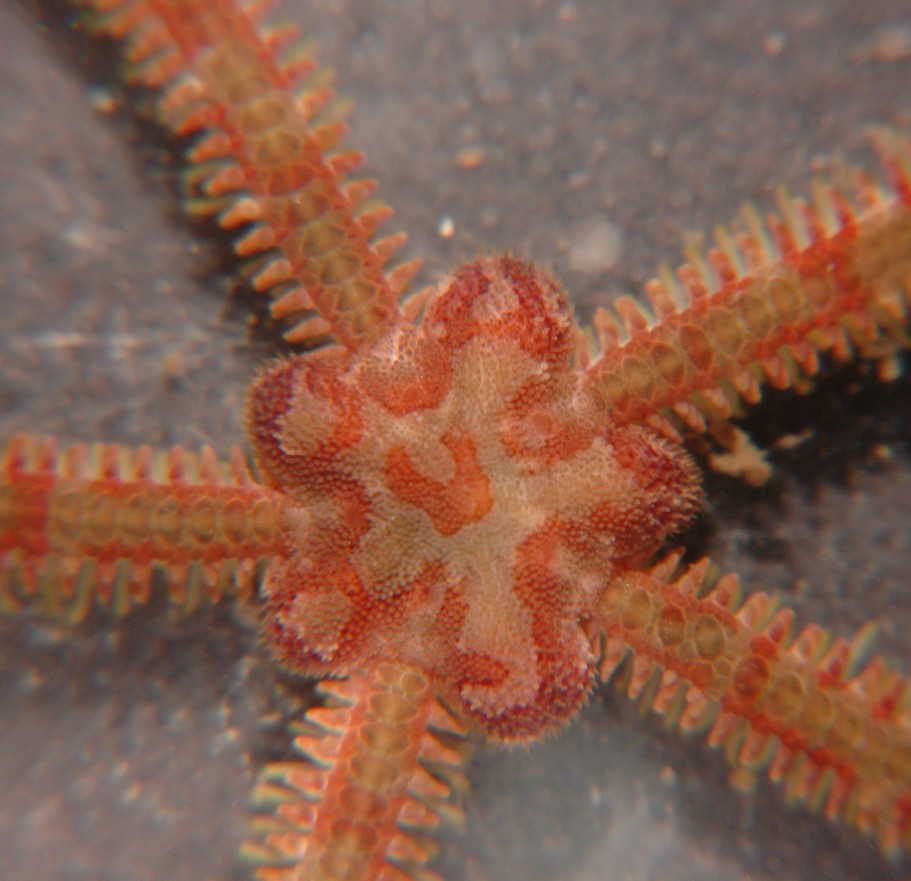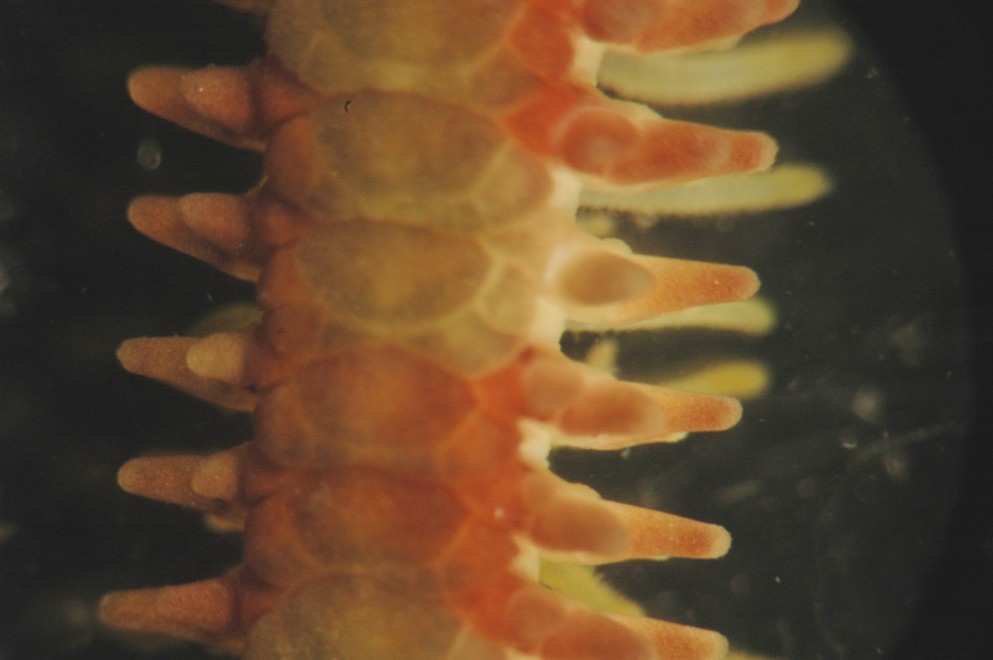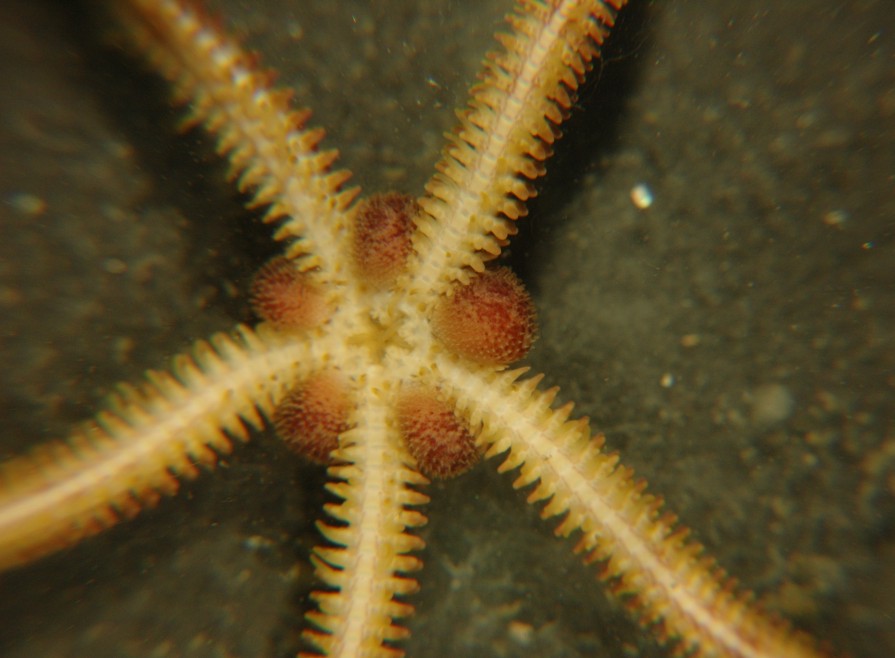Ophiopholis aculeata (Linnaeus, 1767)Common name(s): Daisy brittle star, Painted brittle star, Ubiquitous brittle star |
|
| Synonyms: |  |
| Phylum Echinodermata
Class Ophiuroidea Order Ophiurida Suborder Gnathophiurina Family Ophiactidae |
|
| Ophiopholis aculeata from a subtidal rock, Deception Pass, WA | |
| (Photo by: Dave Cowles, July 2006) | |
How to Distinguish from Similar Species: This is the only local species of brittle stars that has the supplementary plates.
Geographical Range: Worldwide, especially north temperate. On our coasts, Bering Sea to Santa Barbara, CA; most abundant in the north.
Depth Range: Lower intertidal to 2000 m
Habitat: Rocky intertidal or kelp holdfasts
Biology/Natural History: This is the main species common on rocky shores in our area. Others can be found in gravelly areas or in areas with boulders interspersed with sand. They feed by capturing food with their tube feet, by picking up detritus, or by mucus secreted by the rays. Predators include fish and harlequin ducks. Ovaries are red and testes are white. In our area they may spawn in Jan-March, July, October, or November. In the USSR (White sea), spawning seems to follow a lunar cycle. Metamorphosis from the larval stage does not occur until 83-216 days after fertilization.
| Return to: | |||
| Main Page | Alphabetic Index | Systematic Index | Glossary |
References:
Dichotomous Keys:Flora and Fairbanks
Kozloff 1987, 1996
Smith and Carlton, 1975
General References:
Harbo,
1999
Johnson
and Snook, 1955
Kozloff,
1993
Lambert
and Austin, 2007
McConnaughey
and McConnaughey, 1985
Morris
et al., 1980
Niesen,
1997
O'Clair
and O'Clair, 1998
Sept,
1999
Scientific Articles:
Knott, K. Emily, and Gregory A. Wray, 2000. Controversy and consensus
in Asteroid systematics: new insights to Ordinal and Familial
relationships. American Zoologist 40:3 pp. 382-392
Web sites:
General Notes and Observations: Locations, abundances, unusual behaviors:

Closeup of the central disk (aboral side) of the individual
above.
The aboral side of the disk is covered with small, conical spines which
are larger toward the margins. It has conspicuous lobes
between the
arms, and may appear inflated.

The "dorsal" (aboral) plates on the rays are separated by small
secondary
plates, as can be seen here.
This is a view of the aboral side of a
ray. The five
spines projecting from the lateral plates can be seen to the sides.
The yellow tube feet can be seen projecting from the other, oral side
of the ray

The underside of the mouth and the rays are white..
Authors and Editors of Page:
Dave Cowles (2006): Created original page